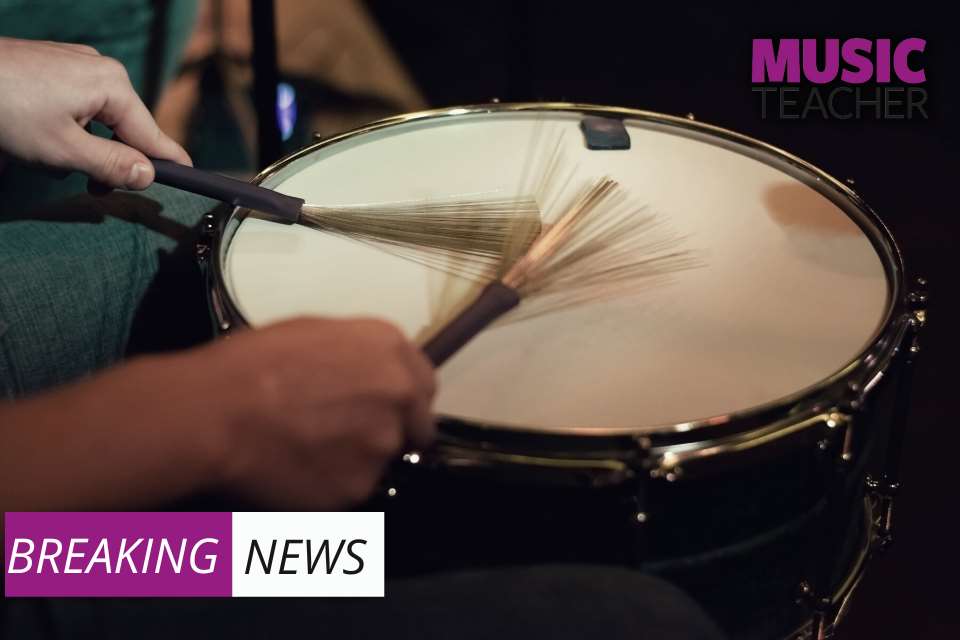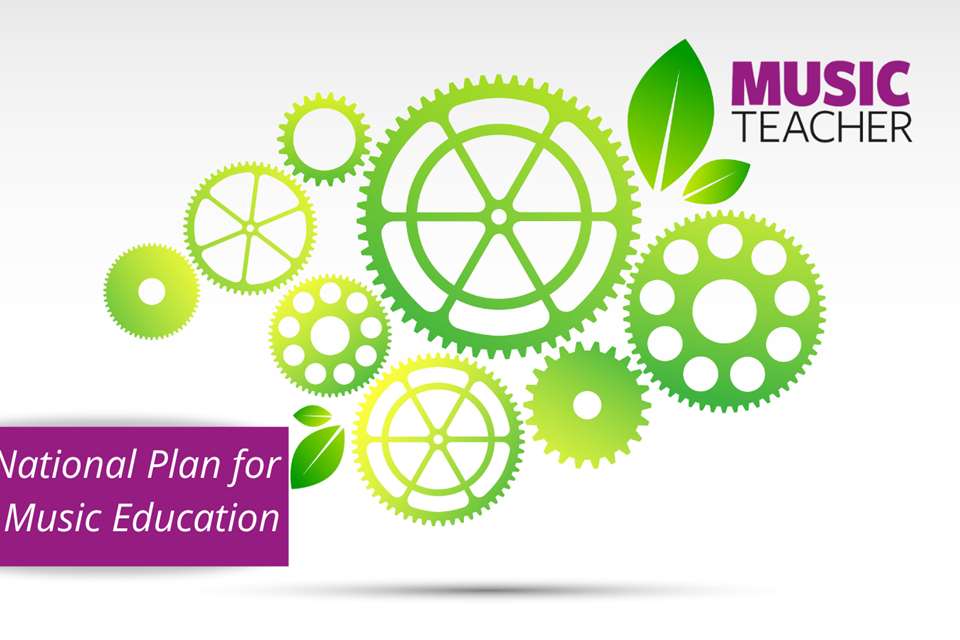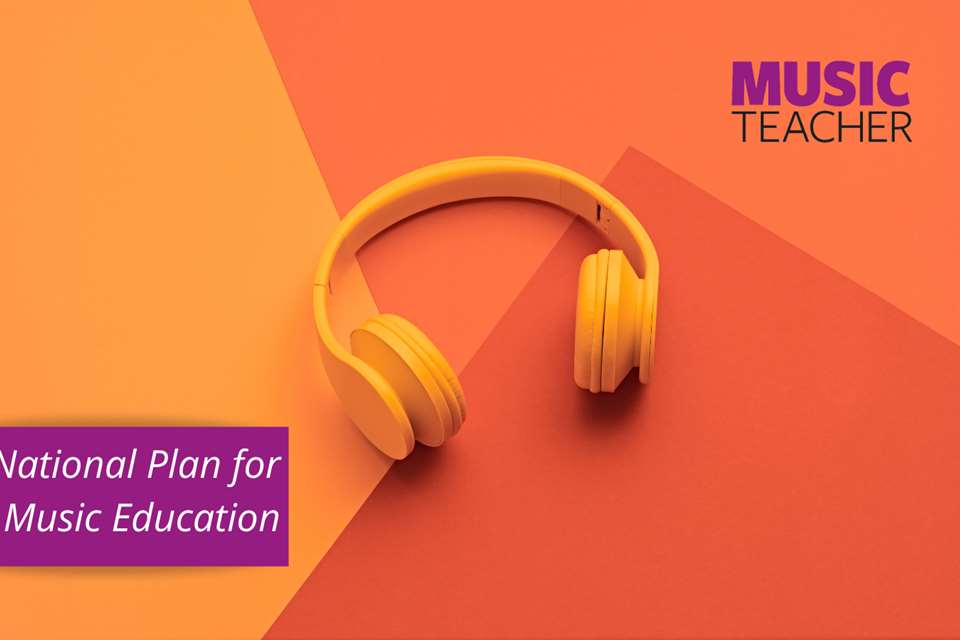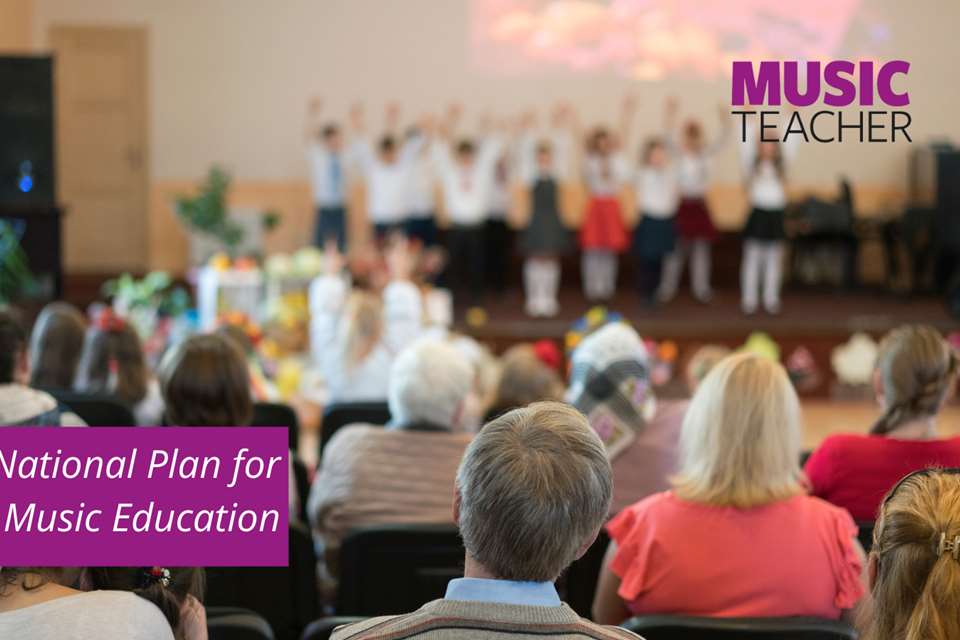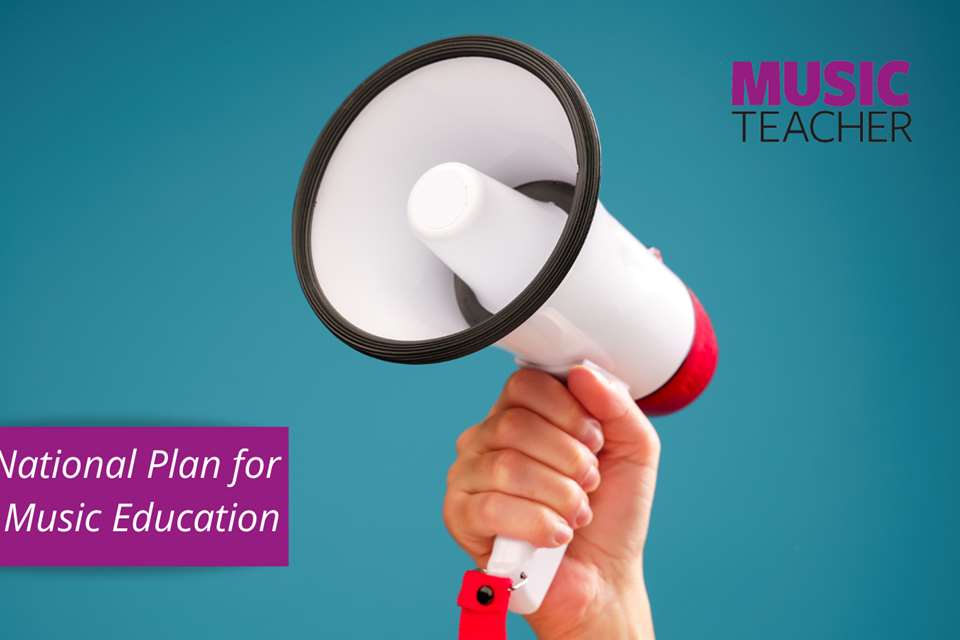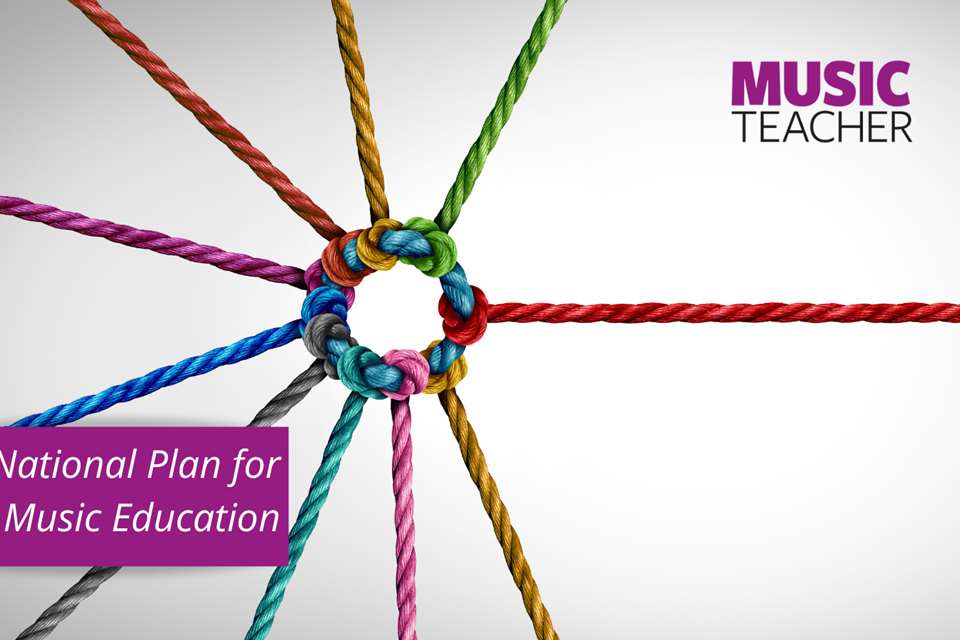NPME interview: National plan for music education advisory panellist Phil Castang
Harriet (Clifford) Richards
Monday, July 4, 2022
One of 15 members of the expert advisory panel for the National Plan for Music Education published at the end of June, Phil Castang provides valuable insight into the plan's contents and shares his thoughts on the finished product.
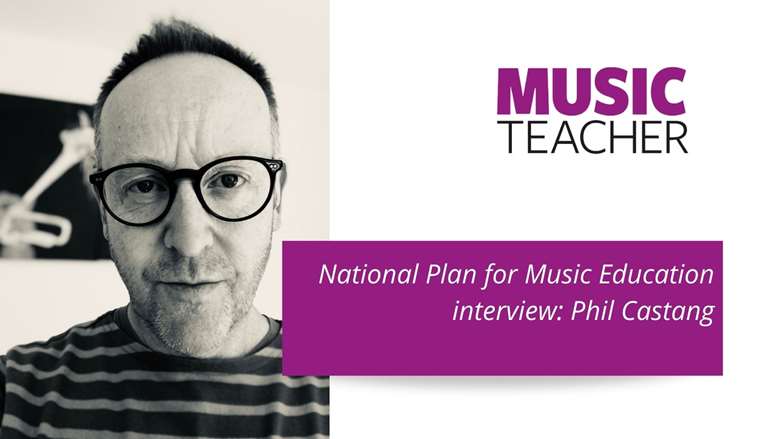
The updated National Plan for Music Education (NPME) is finally with us. As of 12:15am on Saturday 25 June, England had a new plan of action for the delivery of music education to children and young people, now from the early years onwards. The 83-page document from the Department for Education (DfE) and the Department for Digital, Culture, Media & Sport (DCMS), entitled The power of music to change lives, replaces the 2011 document, The importance of music. Even the refreshed title suggests a positive shift, moving us beyond the need to justify music’s place in the curriculum and towards a holistic approach to music education fit to serve all young people today.
The response from music education organisations and advocates has been largely positive so far, with the most common position being one of cautious optimism in the knowledge that the plan is here to stay. Now, says the consensus, the sector must work together to deliver what’s been provided in the best way possible. Broadly speaking, the plan focuses on three key areas: inclusion (or high-quality music education for all), partnerships, and progression. Within this, we have details of ‘lead schools’, four new ‘music hub national centres of excellence’, ‘local plans for music education’, ‘music development plans’ created by each school, and a pilot ‘progression fund’ to support children and young people from disadvantaged backgrounds. An additional £25m has been ring-fenced for instruments and musical equipment, although the DfE has not yet decided whether this will go directly to schools or to the hubs. ‘Forensic’ analysis of the plan’s contents is still ongoing, and some further details are still to emerge.
‘We were all happy’
In August last year, an ‘expert advisory panel’ was announced to develop the plan alongside the DfE and DCMS, made up of 15 individuals from across music education and the wider music industry and chaired by Veronica Wadley (Baroness Fleet). Phil Castang, previously director of creative learning and engagement at Bristol Beacon and now chief executive of Music for Youth and chair of the Music Education Council (MEC), was a member of the panel. Speaking to me a day or two after the NPME was published, Castang says that ‘all things considered’, he is happy with the final plan. ‘It was an incredibly complex process. There was an awful lot of information and so many competing priorities, so it was very difficult.’ He adds: ‘I went into the meetings with some things that I felt were non-negotiable, and they were soon negotiated out of me. But we arrived at something else that I felt I could live with and that would improve matters, even though it wasn’t exactly what I thought I was going in to fight for.’
Before we delve much further, I ask Castang whether, when reading the published plan, he feels as though he wrote it. He says this is ‘hard to answer’ but continues: ‘It’s amazing to see your words written in it; sometimes it’s just neat – exactly what you wrote – and sometimes it’s reinterpreted.’ He adds: ‘That’s fine too, because everyone at the DfE and DCMS was really nice and professional. I really don’t like the “them and us” agenda – they’re ordinary people with normal lives, really concerned to do the best they could with the brief we’d been given. I feel like we all did the best we could with the brief we were given. Some things changed a bit, but nothing that we wrote and moved to support was changed in such a way that we were unhappy. I think we were all happy.’
One of Castang’s ‘non-negotiables’ that ‘didn’t quite make it over the line’, was early years. ‘I worked quite hard on early years and brought forward many solutions to how we might make it more central within the plan, but it didn’t make it.’ Although not as central as he had hoped, EY music is acknowledged more meaningfully than in the 2011 plan, which Castang says is a ‘significant step forward’. Some people have pointed out that asking music education hubs to include early years in their provision without increasing their funding is asking them to do more for less. But Castang says that the expectation isn’t that hubs ‘do’ early years, but that every hub and local music education partnership should ‘have early years represented’. His other non-negotiable was inclusion, which he says was ‘the first thing on the paper’ for everyone on the panel. This one did make it over the line, he says, adding that ‘there’s no way of escaping making inclusion the most important thing you do as part of your work.’
A narrowing of provision or celebrating excellence?
Selected based on excellence in either inclusion, CPD, music technology and pathways to industry, the four national centres of excellence will be appointed via a competitive process (raising some eyebrows). Castang acknowledges that this is one of the more ‘contentious’ parts of the plan. ‘I think people will be worried or surprised by what we’re calling “super hubs”’, he says. ‘The idea behind it is that there are hubs that are really flying in certain areas, and we shouldn’t hold that back – we should enable it and support those hubs to bring that learning to a national audience. We can’t all be fantastic at everything, so let’s learn from those who are doing really well.’ Castang firmly rejects the suggestion that ‘super hubs’ could result in a top-down approach to music education, with a narrowing of provision, innovation, and regional nuance. ‘Best practice develops for contextual reasons, for historical reasons, for local reasons,’ he says, ‘you just have a particular alchemy in a particular region and an excellence develops, and that can be shared nationally. That’s nothing to do with top-down.’
The plan calls on every school to write a music development plan in partnership with their local hub, and each hub should in turn create a local music education plan. Castang says that these local plans are ‘an absolutely vital addition and are a way to bring partnerships back to the fore’, particularly considering the ‘huge disparity’ between the financial investments made by different schools. ‘There is quite a lot of funding in and around music education that is not joined up well,’ he says. ‘Some schools are investing as little as £300 a year in music, and then there are primary schools spending £30-£40k a year.’ Building partnerships from a local music education plan is ‘mission critical’, says Castang, and will bring in ‘access to wider funding, resources, knowledge and expertise to make sure that children have the best music education possible’.
Another change for hubs is the shift from core and extension roles to five ‘strategic functions’ (NPME, p.49). One of the former extension roles of a hub was to provide CPD, but this has now been re-centred as another ‘mission critical’ point, says Castang. ‘There aren’t enough trained practitioners and qualified music specialists, so providing an excellent music education has to come through CPD.’ He adds: ‘CPD and training are almost pound for pound the most effective way of reaching the most children with a high-quality music education.’
Will the NPME be enforced?
One of the key concerns raised about the plan is that it’s non-statutory, meaning that there is nothing tangible holding schools to account on its delivery. As Castang concedes, ‘buy-in from SLT is absolutely critical to the success of the whole plan’. He says: ‘The fact that it’s not enshrined as statutory is, in my mind, an annoyance but a technicality. It’s quite clear that schools have to do this. They have to do this for the benefit of the children, the benefit of the community, and because it’s morally the right thing to do.’ Castang adds that the plan ‘doesn’t leave any room for interpretation’ and serves as an important tool for music leads to take to their headteachers. ‘Many good music teachers already know what to do – they are already doing it and are doing it well. The plan is just crystallising it for everyone to see and understand, and particularly those who don’t know, like senior leadership,’ he says.
Ofsted’s role in enforcing the plan has been mooted, including by Castang and the DfE’s Stefano Pozzi, who answered questions during a joint Music Mark and MEC webinar on the national plan. Castang’s view is that ‘no school should be deemed excellent by Ofsted unless they have excellent music, and that is a way to lock it in that isn’t about the statutory/non-statutory status.’
Shortly after the NPME was published, a blog post written by a headteacher was widely shared on social media. Titled ‘Another damned expectation’, it’s a depressing read, particularly for someone cocooned in the music education bubble. This headteacher says he feels that the NPME is ‘setting him up for failure’ and that music is low down in a school’s priorities when compared to ensuring children are attending school and are fed. Castang shakes his head vehemently when I mention it: ‘I can’t agree. Yes, I have sympathy for all headteachers, but a lot of the best music education that I see is happening in really challenging schools, in high areas of deprivation – they’ve decided to make music central to the school day and it has been transformational.’
Several missing pieces
There are some notable ‘omissions’ from the plan, a key one being a solution to the currently under-supported and gradually dwindling workforce. Castang says this was deliberate: ‘It’s a separate job to really look in forensic detail at what is happening to the workforce, because there is a crisis. We can’t find enough music teachers, which means they’re leaving the profession. Teachers are not fairly compensated; they’re not earning enough; and they’re not being supported enough.’ Not only does this require a separate piece of work, but this is something that sector organisations can work on together, perhaps through a ‘charter of best practice’, says Castang.
He clarifies the purpose of the NPME: ‘It’s not about what should be in music education – it’s just about how we best organise ourselves to make sure music education is delivered fairly across England.’
In terms of next steps, Castang is clear that the cooperation of everyone in the education sector is vital to the plan’s success, as well as ‘disseminating, promoting and getting behind’ it in the coming months and years. The promise of the establishment of a ‘national plan for music education board’ and a 2025 progress report is encouraging, and there are clear deadlines (albeit quite broad) set for when different components of the plan must be actioned.
It is hoped that the government funding for music hubs will increase once the three years of guaranteed investment are up, at least to account for inflation levels. ‘The funding and the plan are like air and a balloon,’ says Castang. ‘If you put more air in it, it blows up bigger and you can do more with it. At any time, more funding could come into this and enable us to do more, but I think the plan is sound and I’m really proud to have been part of it.’
Perhaps unusually, this government document seems to have ‘real’ people behind it who are willing to talk about the decisions made, the compromises come to, and the challenges faced in the process. Keeping this discourse open – and widening it out to those beyond the music education sector – is vital as we look to make this plan a reality for every child and young person.
Read the National Plan for Music Education.


